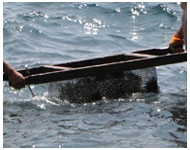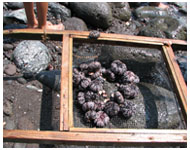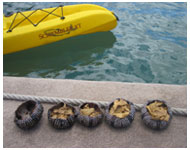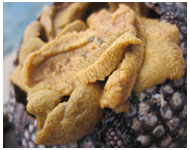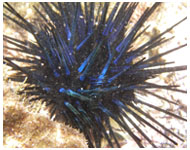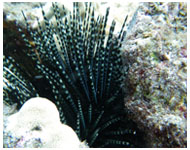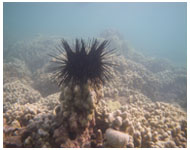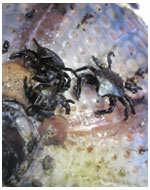Pilina Kai
Wana
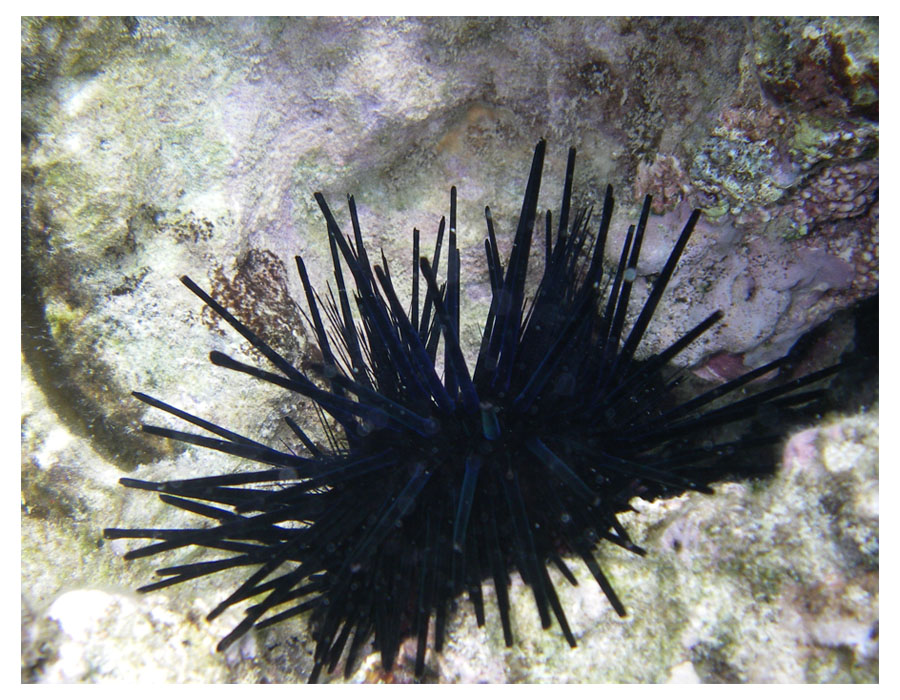
" Ka i'a hō'eha lima "
The fish that can hurt the hands.
('Ōlelo No'eau 1336)
Wana are found on most shorelines with rocks and reef systems. (I have not seen them on sandy bottoms.) Wana have 2 types of needle-like spines. Both are very fragile and break easily when touched or stepped on. When stuck in flesh, it can be very painful but vinegar or urine can ease some of the pain.
Wana can be eaten and is a favorite of our kupuna. It is very liliha or rich so you shouldn't eat too much if your body is not use to it. The "meat" is actually reproductive glands (egg and sperm sacks) making it a seasonal food, eaten when the animal is reproducing or "fat." I have witnessed wana being "fat" once in late summer and once in mid-winter.
Today, wana is collected in a wire basket and shaken to remove the spines. Once the spines are broken off, you crack open the bottom of the body removing the mouth. Once you pull off the mouth, stick your thumb in and run your finger around the inside to loosen it from the shell. Remove the nā'au (only if you like) and little to no meat will be wasted.
While harvesting wana in late summer, we noticed a small crab living between the inner shell and a lining separating the inside of the wana from the shell. The crab was found in almost all the wana we collected. See right image.
